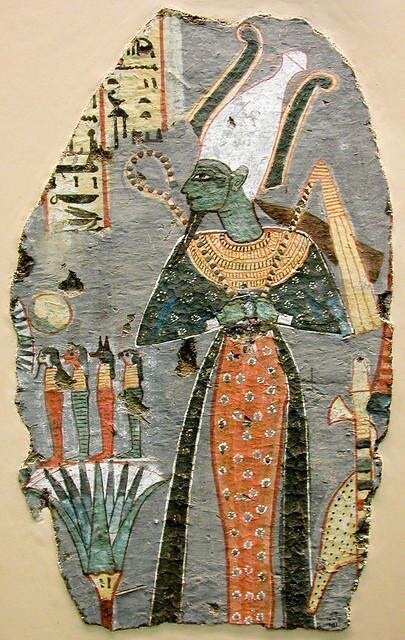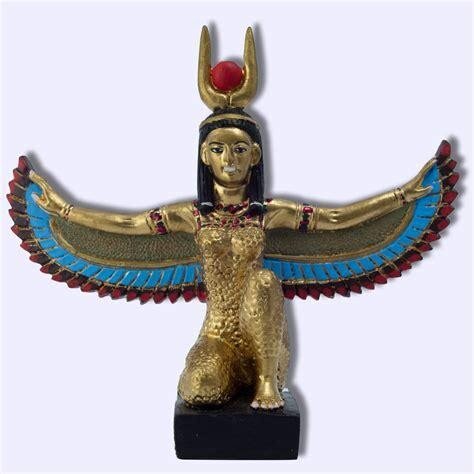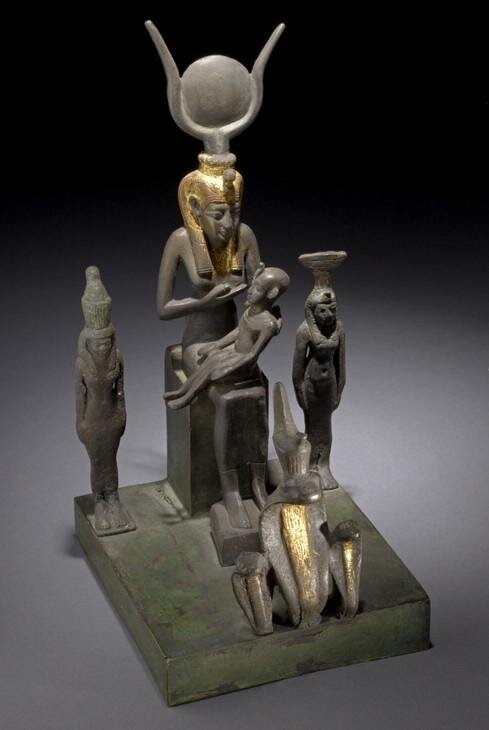Natalya is an undergraduate student studying anthropology and archaeology. Natalya enjoys long walks on the beach, drinking Piña Coladas and getting caught in the rain... when she is not overrun with schoolwork.
The ancient Egyptians ruled their empire with absolute domination. Their written language system was one of the most complex of the time, their trade routes were long and vital to the economic system of the region, and their military was one of the most feared, especially their navy. Nowadays, we might contribute their success to the intricate bureaucratic system they possessed or the gold and fine jewels they had amassed. However, during the time of the great pharaohs, they believed their success was due to their array of great and powerful gods and goddesses that looked over them.
Polytheism was widespread in ancient civilizations, and the Egyptians were no exception. They had gods and goddesses that ruled over every aspect of their lives. Religious iconography is scattered throughout many archaeological sites in Egypt, including the Great Pyramids of Giza. Complex belief systems are one of the conditions archaeologists and anthropologists look for when determining the level of complexity in ancient civilizations. A centralized religion bound people to their state, creating unity in the masses and allowing greater public control. One of the most important stories to the ancient Egyptians was that of the holy family of Osiris, Isis, and Horus.

Join the Waitlist
The legend begins with Osiris, who is often depicted with green skin, holding a crook and flail with the crown of Upper Egypt on his head. Osiris was a king during his life but was tragically murdered by his brother, Set, not once but twice. Isis, Osiris's sister, and wife was a powerful magician, and when she found out about the death of her husband, she searched everywhere for his body so she could revive him after Set's attacks. After the second murder of Osiris, he could no longer sustain human life and therefore became the lord of the underworld. Death and the idea of life after death were essential to ancient Egyptians, especially to the royals. Its significance can be seen in the intricate tombs, the pyramids, and the multiple hieroglyphic inscriptions depicting the rules of life and death. Being lord of the underworld secured Osiris a position of great power and authority in Egypt. Isis was one of the most important deities of Egyptian times. She was a role model for all ancient Egyptian women, as she was the goddess of the moon, life, magic and was the protector of women and children. She is often depicted as a beautiful woman with a sun disk on her head between the horns of a cow. Scholars have compared her to the Greek goddess, Demeter, as they both symbolize divine motherhood. Her son, Horus, is the last piece of the holy triad.

Horus rose to power as he sought to avenge his father's death. Set and Horus began to battle, as Set was desperate for the throne that was rightfully Horus's. During the war, Horus's eye was damaged, which was thought to represent the moon's phases, but he was victorious and became the king of Upper Egypt. Horus is shown with a falcon head and is associated with the sky, sun, kingship, protection and healing. Together, Osiris, Isis and Horus created a family structure that helped shape the family unit in ancient Egypt. Women strived to be as loyal a wife and as fierce a protector of their children as Iris, and the men fought to be as powerful as both Osiris and Horus.

The importance of the holy family cannot be overstated. Children were a blessing in ancient Egypt, but giving birth was potentially fatal for both mother and child. People would leave tributes to Osiris at the graves of deceased family members to convince him to let them have children. Women would pray to Isis for the power of divine motherhood, and others would pray to Horus to protect both the mother and the child.
The formation of the family, the ideals of what a good mother, son, and father looked like, were all based on the stories of gods and goddesses.
Nowadays, mythology is viewed as simple storytelling, but as the story of Osiris, Isis, and Horus proves, it had real-life consequences. The formation of the family, the ideals of what a good mother, son, and father looked like, were all based on the stories of gods and goddesses. Although these deities are no longer worshipped, it is without a doubt that their presence provided deep emotional support as families lost their loved ones or struggled to have children. The power of mythology does not necessarily lay within the power of the deities, but more so in what we mortals chose to take from their lessons.
Join the Conversation
Join the waitlist to share your thoughts and join the conversation.
Natalya Jones
Natalya is an undergraduate student studying anthropology and archaeology. Natalya enjoys long walks on the beach, drinking Piña Coladas and getting caught in the rain... when she is not overrun with schoolwork.
.png)